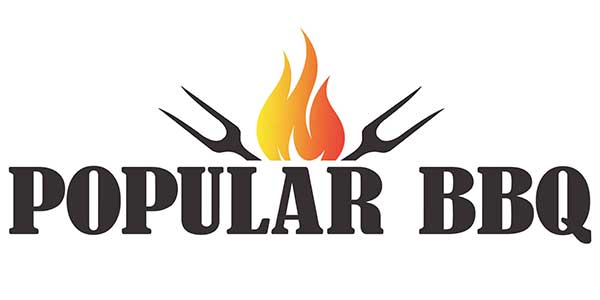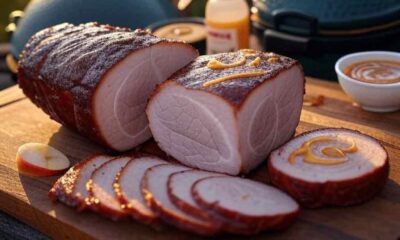Sides & Desert Recipes
Eggnog History and Recipes: Perfect Your Holiday Tradition Now

Homemade eggnog ready to enjoy.
Ingredients for Eggnog Recipes
Here’s what you’ll need for our Eggnog History and Recipes. Simple stuff, but it’ll build you a rich, creamy base that’d make any camp cook proud.
- 4 large eggs
- 1/2 cup granulated sugar
- 2 cups whole milk
- 1 cup heavy cream
- 1 teaspoon vanilla extract
- 1/2 teaspoon ground nutmeg, plus extra for garnish
- 1/4 teaspoon ground cinnamon
- Optional: 1/2 cup bourbon, brandy, or rum for an adult kick
How to Make Classic Eggnog: A Key Part of Eggnog History and Recipes
Follow these steps to whip up a classic eggnog, a cornerstone of our Eggnog History and Recipes. It’s easier than settin’ up a tent in a snowstorm, trust me!
- Separate the Eggs: Crack them eggs and split the yolks from the whites. Chuck the yolks in a big mixin’ bowl and stash the whites in another for later.
- Mix the Yolks: Beat them yolks with the sugar ‘til they’re light and fluffy—‘bout 3-4 minutes of good elbow grease.
- Combine Dairy: Grab a cast iron pot, mix the milk, cream, vanilla, nutmeg, and cinnamon. Heat it over a steady fire—or medium heat if you’re indoors—‘til it’s hot but not boilin’.
- Temper the Eggs: Slow and steady, whisk that hot milk mix into the yolks to keep ‘em from scramblin’. Stir like you’re stirrin’ a pot of campfire stew.
- Cook the Mixture: Pour it all back in the pot and cook over low heat, stirrin’ constant-like ‘til it thickens a touch—‘bout 5 minutes. Don’t let it boil, or you’ll ruin the batch.
- Cool: Pull it off the heat, let it rest a spell, then move it to a bowl or pitcher. Stash it in the icebox ‘til it’s good and chilled—hours or overnight’ll do.
- Whisk the Whites: Want it frothy? Beat them egg whites ‘til they peak soft, then fold ‘em gentle into the chilled nog.
- Alcohol (Optional): For the grown folks, stir in some bourbon, brandy, or rum right afore servin’—keeps the kick strong.
- Serve: Pour it into glasses, dust with nutmeg for that rustic charm, and serve it cold as a Montana mornin’.
Tips for Perfecting Your Eggnog Recipes
- Safety First: Heatin’ it up kills off any nasties, but if you’re frettin’, use them pasteurized eggs.
- Customization: Tweak the spices—throw in cloves or allspice if you’re feelin’ adventurous.
- Storage: Keep it in the icebox up to 3 days. Give it a stir afore servin’ if it settles.
- Non-Alcoholic Version: Skip the hooch for the young’uns. Add some flavor syrups if you’re fancy.
Creative Eggnog Recipes and Serving Ideas
These twists on Eggnog History and Recipes’ll have your campmates grinnin’. Try ‘em for a hearty holiday boost!
- Hot Eggnog: Warm it slow over the fire. Serve it quick for a toasty treat.
- Eggnog Latte: Mix equal parts hot nog and espresso. Top with whipped cream and a sprinkle of nutmeg.
- Eggnog Floats: Drop a scoop of vanilla or spiced rum ice cream in a tall glass—pure campfire luxury.
- Eggnog Smoothie: Blend with ice, a banana, and a pinch of cinnamon for a frosty gulp.
Cocktails:
- Brandy Alexander: Mix nog with brandy and crème de cacao. Serve in a fancy glass with nutmeg.
- Eggnog Martini: Shake nog with vodka or rum and vanilla. Stick a cinnamon stick in there for flair.
Non-Alcoholic Variations:
- Spiced Eggnog: Simmer star anise or cloves in the milk afore mixin’—adds a woodsy depth.
- Eggnog Shake: Blend with vanilla ice cream for a creamy shake that’d warm any cold night.
Eggnog Desserts:
- Use nog as a base for ice cream or custard—perfect for a Dutch oven.
- Add to pancake or waffle batter for a mornin’ feast by the fire.
With these tricks, homemade eggnog’s a rugged addition to your holiday spread.
Eggnog History: From Medieval Roots to Modern Celebrations
Knowin’ Eggnog History and Recipes gives your traditions some grit. Let’s mosey through its past.
Medieval Origins of Eggnog
Eggnog started back in medieval Britain with a brew called “posset.” It was warm, spiced milk with ale or wine—somethin’ to fight off the chill. Even monks whipped up versions with eggs, which were rare as a blue moon back then.
Eggnog in Colonial America
Meanwhile, over in the colonies, British settlers took to eggnog like bears to honey. Eggs, milk, and cream were aplenty, and rum—cheaper than fancy brandy—spiced it up just right.
Eggnog Through Prohibition and Modern Times
Come Christmas, eggnog settled in as a staple. George Washington had his own mix with rye whiskey, rum, and sherry. During Prohibition (1920-1933), folks went dry with it. Nowadays, you can grab it store-bought, but nothin’ beats makin’ it yourself over a fire.
Whether you sip it old-school or tweak it modern, eggnog’s a surefire way to stoke the holiday spirit.
You might want to consider Frying a Turkey for your holiday celebration.
How do you like to enjoy your eggnog? Share your favorite recipes or serving ideas in the comments below!











